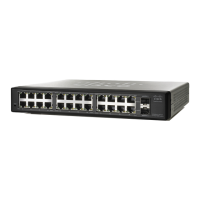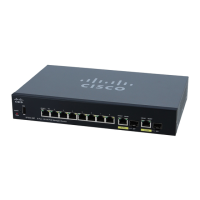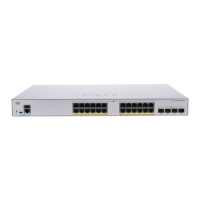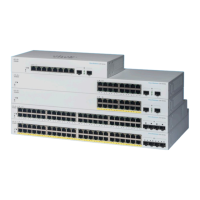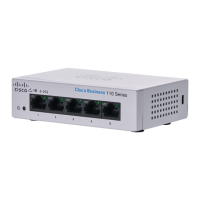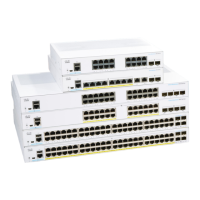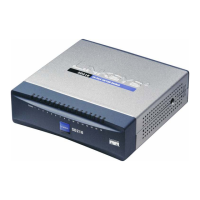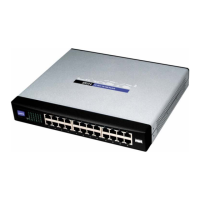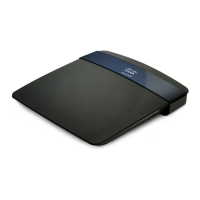VLAN Management
Overview
Cisco Small Business 200 Series Smart Switch Administration Guide 178
14
If a frame is VLAN-tagged, a four-byte VLAN tag is added to each Ethernet frame. The tag contains a VLAN
ID between 1 and 4094, and a VLAN Priority Tag (VPT) between 0 and 7. See Quality of Service for details
about VPT.
When a frame enters a VLAN-aware device, it is classified as belonging to a VLAN, based on the four-byte
VLAN tag in the frame.
If there is no VLAN tag in the frame or the frame is priority-tagged only, the frame is classified to the VLAN
based on the PVID (Port VLAN Identifier) configured at the ingress port where the frame is received.
The frame is discarded at the ingress port if Ingress Filtering is enabled and the ingress port is not a
member of the VLAN to which the packet belongs. A frame is regarded as priority-tagged only if the VID in
its VLAN tag is 0.
Frames belonging to a VLAN remain within the VLAN. This is achieved by sending or forwarding a frame
only to egress ports that are members of the target VLAN. An egress port may be a tagged or untagged
member of a VLAN.
The egress port:
• Adds a VLAN tag to the frame if the egress port is a tagged member of the target VLAN, and the
original frame does not have a VLAN tag.
• Removes the VLAN tag from the frame if the egress port is an untagged member of the target VLAN,
and the original frame has a VLAN tag.
VLAN Roles
All VLAN traffic (Unicast/Broadcast/Multicast) remains within its VLAN. Devices attached to different
VLANs do not have direct connectivity to each other over the Ethernet MAC layer.
Device VLANs can only be created statically.
Some VLANs can have additional roles, including:
• Voice VLAN: For more information refer to the Voice VLAN section.
• Guest VLAN: Set in the Edit VLAN Authentication page.
• Default VLAN: For more information refer to the Configuring Default VLAN Settings section.
• Management VLAN: For more information refer to the Configuring IP Information section.
QinQ
QinQ provides isolation between service provider networks and customers' networks. The device is a
provider bridge that supports port-based c-tagged service interface.
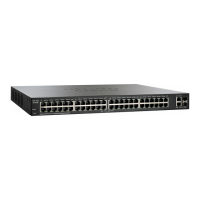
